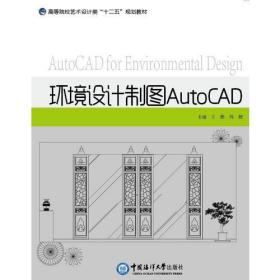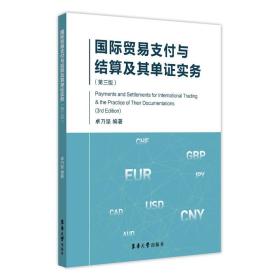
财务管理英语
¥ 22.31 5.3折 ¥ 42 九品
仅1件
北京东城
认证卖家担保交易快速发货售后保障
作者王文杰;闵雪;贺琼;王昱睿;杜丹
出版社清华大学出版社
出版时间2020-11
版次1
装帧其他
货号A5
上书时间2024-12-19
- 最新上架
商品详情
- 品相描述:九品
图书标准信息
- 作者 王文杰;闵雪;贺琼;王昱睿;杜丹
- 出版社 清华大学出版社
- 出版时间 2020-11
- 版次 1
- ISBN 9787302529217
- 定价 42.00元
- 装帧 其他
- 开本 16开
- 纸张 胶版纸
- 页数 171页
- 字数 273千字
- 【内容简介】
- 《财务管理英语》按财务管理专业主干课程的架构共设四篇十章,具体包括财务管理概述、财务报表 概述、货币时间价值、风险与收益、资本预算、资本成本、资本结构、股利政策、资产评估 概述及权益估值和公司估值等内容。本书不仅列出了各章节主要概念,配有中文的拓展阅读, 用于丰富和启发学生对于相关知识点的学习,而且配有适当的习题与案例,供教师教学和学 生学习使用。 本书内容全面,包含了财务管理、公司理财、资产评估及企业价值评估等专业方向的基 本理论介绍,特别适合用作财务管理相关专业学生的教材,也可供相关从业者学习参考。教学 课件和习题答案的下载方式见前言。
- 【目录】
-
Part Ⅰ Basis of Financial Valuation 1
Chapter 1 Introduction to Financial Management 2
1.1 Financial Management and Financial Manager 3
1.1.1 Financial Management 3
1.1.2 Financial Manager 4
1.2 Objectives and Functions of Financial Management 4
1.2.1 Objectives of Financial Management 4
1.2.2 Functions of Financial Management 6
1.3 Financial Market and Market Efficiency 7
1.3.1 Financial Market 7
1.3.2 Market Efficiency 8
1.3.3 Degrees of Market Efficiency 8
1.4 Agency Relationships 10
1.4.1 Agency Problems 10
1.4.2 Agency Costs 10
1.4.3 Practical Solutions to the Agency Problems 11
Questions and Problems 16
Chapter 2 Introduction to Financial Statements 18
2.1 Financial Statements and Annual Reports 19
2.1.1 Overview of Financial Statements 19
2.1.2 Corporate Annual Reports 20
2.2 Analysis of Financial Statements 21
2.2.1 The Need for Ratios 21
2.2.2 Types of Accounting Ratios 22
2.2.3 Users of Ratios 22
2.2.4 Categories of Ratio 23
Questions and Problems 32
Chapter 3 Time Value of Money 34
3.1 Value Creation and Corporate Investment 35
3.2 Simple and Compound Interest 36
3.2.1 Simple Interest 36
3.2.2 Compound Interest 36
3.3 Future Value and Present Value 37
3.3.1 Future Value ··37
3.3.2 Present Value 38
3.3.3 Determining the Rate of Interest 39
3.3.4 Annuity 39
Questions and Problems 46
Part Ⅱ Capital Budgeting 47
Chapter 4 Risk and Return 48
4.1 Understanding Return 49
4.1.1 Return 49
4.1.2 Measuring Return 50
4.2 Understanding Risk 50
4.2.1 Risk 50
4.2.2 Measuring Risk 51
4.3 Portfolio Theory 52
4.3.1 Basic Assumptions 52
4.3.2 Portfolio Return and Risk 52
4.3.3 Minimum-Variance and Efficient Frontiers 56
4.3.4 The Selection of an Optimal Portfolio 57
4.3.5 Systematic Risk and unsystematic Risk 60
4.4 Capital Asset Pricing Model (CAPM ) 61
Questions and Problems 66
Chapter 5 Categories of Capital Budgeting Projects 69
5.1 Capital Budgeting 70
Importance of Capital Budgeting 70
5.2 Project Appraisal 71
5.2.1 Categories of Capital Budgeting Projects 71
5.2.2 Are Profit Calculations Useful for Estimating Project Viability? 71
5.2.3 Guidelines for Estimating Project Cash Flows 72
5.3 Project Appraisal Rules 73
5.3.1 Net Present Value (NPV) 73
5.3.2 Internal Rate of Return (IRR) 74
5.3.3 Payback Period and Discounted Payback Period 77
5.3.4 Accounting Rate of Return 79
5.4 The Investment Process 81
Questions and Problems 86
Chapter 6 Cost of Capital 88
6.1 Introduction to the Cost of Capital 89
6.1.1 Source of Finance 89
6.1.2 What is the Cost of Capital? 90
6.1.3 General Model to Estimate the Cost of Capital 90
6.2 Cost of Debt 90
6.3 Cost of Equity 91
6.3.1 Cost of Preferred Stock 91
6.3.2 Cost of Common Equity 92
6.4 Weighted Average Cost of Capital 95
6.4.1 What is the Weighted Average Cost of Capital? 95
6.4.2 Factors Affecting the Weighted Average Cost of Capital 95
Questions and Problems 98
Part Ⅲ Financing Decision 103
Chapter 7 Capital Structure 104
7.1 Leverage Analysis 105
7.1.1 Operating Leverage 105
7.1.2 Financial Leverage 106
7.1.3 Total Leverage 107
7.1.4 Financial Risk and Financial Leverage 108
7.2 Capital Structure and Cost of Capital 108
7.3 Capital Structure Theory 109
7.4 Factors that Influence a Firm’s Capital Structure Decision 110
7.5 Features of an Optimal Capital Structure 110
7.6 Value of a Firm and Cost of Capital 111
Questions and Problems 115
Chapter 8 Dividend Policy 117
8.1 Dividend Payments 118
8.1.1 Dividend 118
8.1.2 Cash Dividend, Stock Dividend and Stock Split 118
8.1.3 Dividends Payment 120
8.2 Overview of Dividend Policy 120
8.2.1 Factors Affecting Dividend Policy 120
8.2.2 Residual Policy 121
8.2.3 Constant Dividend Payout Ratio 121
8.2.4 Stable Dividend Policy 122
8.3 Share Repurchase 122
Questions and Problems 125
Part Ⅳ Valuation 129
Chapter 9 Introduction to Asset Valuation 130
9.1 Asset Valuation 131
9.1.1 Definition of Asset Valuation 131
9.1.2 Characteristics of Asset Valuation 132
9.2 Assumptions of Asset Valuation 132
9.2.1 Open Market Concepts 132
9.2.2 Continue to Use Concepts 133
9.2.3 Liquidation Concepts 133
9.3 Types of Value 133
9.3.1 Market Value 133
9.3.2 Replacement Cost 133
9.3.3 Present Value 133
9.3.4 Liquidation Value 133
9.4 Procedures of Asset Valuation 134
9.5 Approaches of Asset Valuation 134
9.5.1 Market Approach 134
9.5.2 Income Approach 135
9.5.3 Cost Approach 137
Questions and Problems 144
Chapter 10 Equity & Corporate Valuation 147
10.1 Equity Valuation 148
10.1.1 Dividends Discount Model 148
10.1.2 Free Cash Flow to Equity Discount Model 152
10.2 Corporate Valuation 153
10.2.1 Free Cash Flow to the Firm Discount Model 153
10.2.2 Price-Earnings Ratio 157
Questions and Problems 160
Appendix I Future Value of $1 at Compound Interest 164
Appendix II Present Value of $1 at Compound Interest 166
Appendix III Present Value of an Annuity of $1 at Compound Interest 168
Appendix IV Future Value of an Annuity of $1 at Compound Interest 170
点击展开
点击收起
— 没有更多了 —












以下为对购买帮助不大的评价